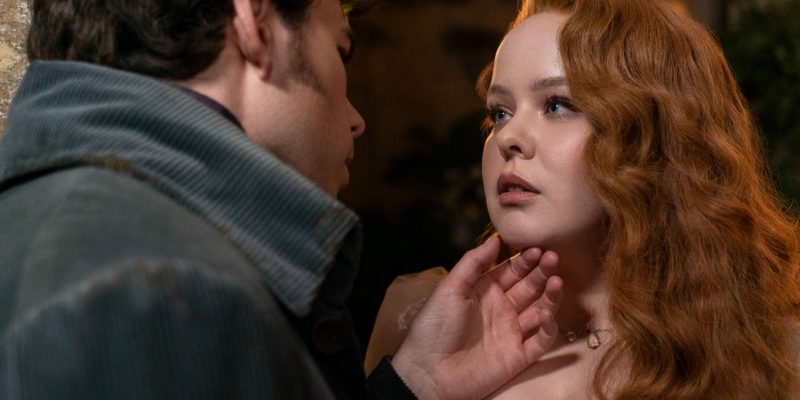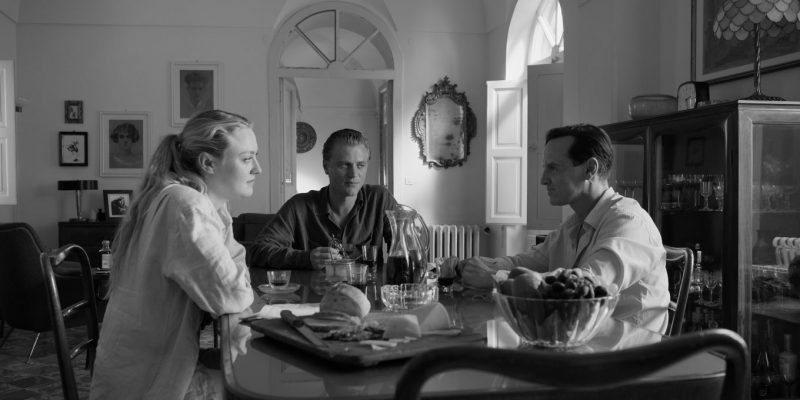Music
Karen Kain Wants a Better Future for Canadian Ballerinas
The legendary artist and prima ballerina says goodbye in the new CBC docuseries Swan Song.
by : Patricia Karounos- Oct 25th, 2023

Christopher Sherman
“Well, I loved Karen Kain,” says ballerina Shaelynn Estrada when asked how she ended up joining the National Ballet of Canada in 2019. “I love her even more now.” The Texas native knew she wanted to be a dancer at just two years old, after she saw a ballet performance on PBS, and she jumped headfirst into a tutu from there. Growing up in a working-class family, she hustled to earn scholarships to train in Florida and elsewhere in the U.S. One of her teachers was former National Ballet dancer Linda Maybarduk, who would share stories of dancing with Kain back in the ’70s, enchanting Estrada. Soon, her walls were covered in photos of other Canadian dancers, like Heather Ogden and Guillaume Côté. Years later, when she heard that a kid from her first-ever ballet class had joined the company, Estrada knew that an audition—and hopefully a spot—at the National Ballet was within reach. “Plus, one of the [company’s] dancers was the first woman to [dance as the] Mad Hatter, and I wanted to be at a company that was willing to do [things like] that,” she says.
When Estrada got the news that she had earned a role in the corps de ballet (the group of dancers who move in total unison, usually in support of the soloists or principal dancers) at the National Ballet, she couldn’t have imagined that she would one day perform in Swan Lake, Kain’s first directorial effort with the company and the last production of her 50-year career before her retirement. But although rehearsals and the performances were delayed by the pandemic, that’s exactly what she did in 2022. To top it all off? There were cameras capturing every behind-the-scenes moment for a documentary about the landmark production.
Directed by Canadian filmmaker Chelsea McMullan (who worked with artist Tanya Tagaq on 2022’s Ever Deadly) and executive-produced by Neve Campbell (the Scream star had practised ballet before becoming an actor and even trained at the National Ballet’s school), the documentary, aptly titled Swan Song, evolved into two forms. The first was a feature-length film, which premiered at the Toronto International Film Festival earlier this fall, and then there’s a four-part series, which is debuting on CBC and CBC Gem on November 22. Both versions follow company members, including Estrada, as well as principal dancers Jurgita Dronina, Siphesihle November and Genevieve Penn Nabity, each of them offering a raw, unfiltered look at the physical and emotional experiences of ballet.
“Swan Lake, about a woman named Odette who has been turned into a swan under a curse that can only be broken by true love, holds a special place in Kain’s heart.”
Even before the cameras were factored in, Swan Lake could have been considered a high-stakes production for the National Ballet and Kain. The legendary artist debuted with the company in 1971 when she was just 19, stepping into the lead role in Swan Lake for an injured colleague. She was quickly promoted to principal dancer, and throughout her 28-year onstage career, she was known as the prima ballerina of Canada. She formed strong creative partnerships with dancers such as Rudolf Nureyev and Frank Augustyn, won (among many other accolades) a silver medal at the prestigious International Ballet Competition in Moscow in 1973, was appointed to the highest level of the Order of Canada (Companion) in 1991 and received the Queen Elizabeth II Diamond Jubilee Medal in 2012. She became artistic director of the National Ballet in 2005 and had held the role longer than any of her predecessors by the time she stepped down in 2021. (That same year, Kain was named artistic director emerita of the company.) She pushed through pandemic delays to finish Swan Lake, which would, officially, be her last professional act.
Swan Lake, about a woman named Odette who has been turned into a swan under a curse that can only be broken by true love, holds a special place in Kain’s heart. She danced in and watched countless versions of the classic ballet over the course of her career. But she has always been especially fond of the staging that she made her debut in, which was by the late Danish choreographer (and one-time National Ballet artistic director) Erik Bruhn. His version, she says, builds better dramatic tension because it only has one intermission, making the story far more compelling. Kain knew that there would never be a more ideal time to bring back that particular staging while also adding her own vision to it as director.
“I didn’t feel hugely confident that I was capable of restaging Erik Bruhn’s Swan Lake—I always know what I want, but I’m not always sure how to get it. [For this production], I was surrounded by some very good people who were so supportive and helped me so much,” says Kain, noting that Christopher Stowell and Robert Binet are the choreographers she worked with on the production.
 Corps de Ballet Dancers (From Left): Arielle Miralles, Tene Ward, Shaelynn Estrada and Selene Guerrero-Trujillo. Photo: Christopher Sherman.
Corps de Ballet Dancers (From Left): Arielle Miralles, Tene Ward, Shaelynn Estrada and Selene Guerrero-Trujillo. Photo: Christopher Sherman.The docuseries intimately chronicles the intensive and exhausting process required to put on a ballet like Swan Lake—something that is meant to look effortless and beautiful but is actually tremendously difficult and taxing. Viewers also get insight into what Kain did to make the production more progressive, such as having the dancers go onstage with bare legs rather than in the chalk-white or pale-pink tights meant to make the “swans” look more uniform. An outsider might not think this would be a big deal, but the move was met with some apprehension. However, as some dancers of colour, such as Australian corps de ballet member Tene Ward, point out in the doc, wearing tights that don’t match one’s skin tone can be uncomfortable and just works to uphold the exclusionary, stereo- typical and very white idea of what ballet “should” look like.
Ward is glad that these more serious conversations about representation and other tough issues are part of Swan Song. She hopes not only that the audience will learn more about the difficult realities of being a ballerina but also that people with power in her industry will be forced to tackle issues head-on as a result of what’s being shared with the larger public onscreen. “Ballet has a reputation for being something that’s so beautiful, so a lot of the time, all these other issues get swept under the rug and ignored,” says Ward, who joined the National Ballet in 2018. “It’s really important for people to know that when they go to the ballet, it’s not just a beautiful thing they’re seeing onstage. I hope the next thing that will be [addressed] is casting. There’s a stereotypical image of what a [lead role] looks like, and if you don’t fit that image, then it can feel like your technique or your artistry don’t even matter.”
The documentary doesn’t stop at representation. It also gets real about the physical toll ballet can have on a dancer’s body, classism and the too common struggles with eating disorders, self-image and mental health. Estrada, in particular, commands attention onscreen because of how candid she is about the challenges she faces, openly talking about therapy and her past with self-harm. She often describes ballet as something she gives her all to and that takes a toll on her—yet it’s the “lighthouse” she can’t live without. In a moment that feels almost too private to be let in on (Estrada assures us that the camera crew was always respectful of the dancers and she never felt pressured to be filmed), the pro comes off the stage—still out of breath and glistening with sweat—visibly frustrated by her performance, even as others stop to compliment her. You get the sense that this internal battle is not unfamiliar to Estrada and that she couldn’t hide this side of herself even if she wanted to.
 Christopher Sherman
Christopher Sherman“I’ve always felt really alone,” she says of the complex feelings ballet can bring up. “I have a niece and nephews, and I don’t want them to grow up—if they want to do ballet or anything else—feeling like they have to be phony or that being themselves isn’t good enough. I still feel like that every day. And I don’t want these ideas, [which are] always in my head, to continue with the next generation. I don’t want the trend to stay the same.”
For Kain, who has spent her career trying to nurture and spread recognition of talent at the National Ballet, participating in the doc appealed to her for another reason: It was a chance to let the spotlight fall on some of the company’s other talented dancers. And that’s a fine line Swan Song pirouettes on exceptionally well; it’s about not just honouring an icon’s legacy but also making space for those who are there now and everyone else who will come next. “It really sincerely annoyed me that when I would guest dance with Rudolf in Vienna or Moscow, nobody had ever heard of the National Ballet of Canada,” says Kain. “[Balletomanes] knew me because I had won a silver medal in Russia, but, in general, people would just call me ‘La Canadienne’—I didn’t like that, and I was always bragging about what a wonderful company [we have].”
Estrada says that under Kain’s direction, everyone mattered. Describing herself as a “naturally jealous” person, the dancer says that both the Swan Lake and Swan Song experiences helped her realize in a more meaningful way that when individual dancers are succeeding, that means she and the rest of the company are succeeding too. She also found a deeper sense of camaraderie and connection with the other women in the corps de ballet, something she previously felt she’d been missing a bit. “Part of that has to do with Karen—the way she ran the operation was a team effort in every sense, and she really cared about the corps girls, which isn’t always a thing,” she says. “Karen really made that a priority—or maybe it was just the effect she had on us.”
Ward agrees that Kain’s warm demeanour is exactly as it’s portrayed in the doc. Something else that’s powerful about Swan Song is the fact that it will bring ballet directly into the homes of Canadians who might have never seen a live performance or might have misconceptions about what the art form really is. “It’s so exciting,” says Ward, “to see so many different types of dancers finally have the chance to show up and be seen.”
Newsletter
Join our mailing list for the latest and biggest in fashion trends, beauty, culture and celebrity.
Read Next

Fashion
Haider Ackermann Is the First-Ever Creative Director of Canada Goose
Plus, actor and activist Jane Fonda partners with the outerwear brand to save the polar bears.
by : Allie Turner- May 15th, 2024

VIP
This Innovator Bridges Continents Through Sustainable Tourism Initiatives
Suet Ki Chu spearheads a movement that harmonizes the thrill of exploration with sustainability principles.
by : Contributor Content- May 15th, 2024

Culture
This Quebec Weekend Itinerary Takes the Scenic Route
The Outaouais has it all.
by : ELLE Canada- May 13th, 2024




